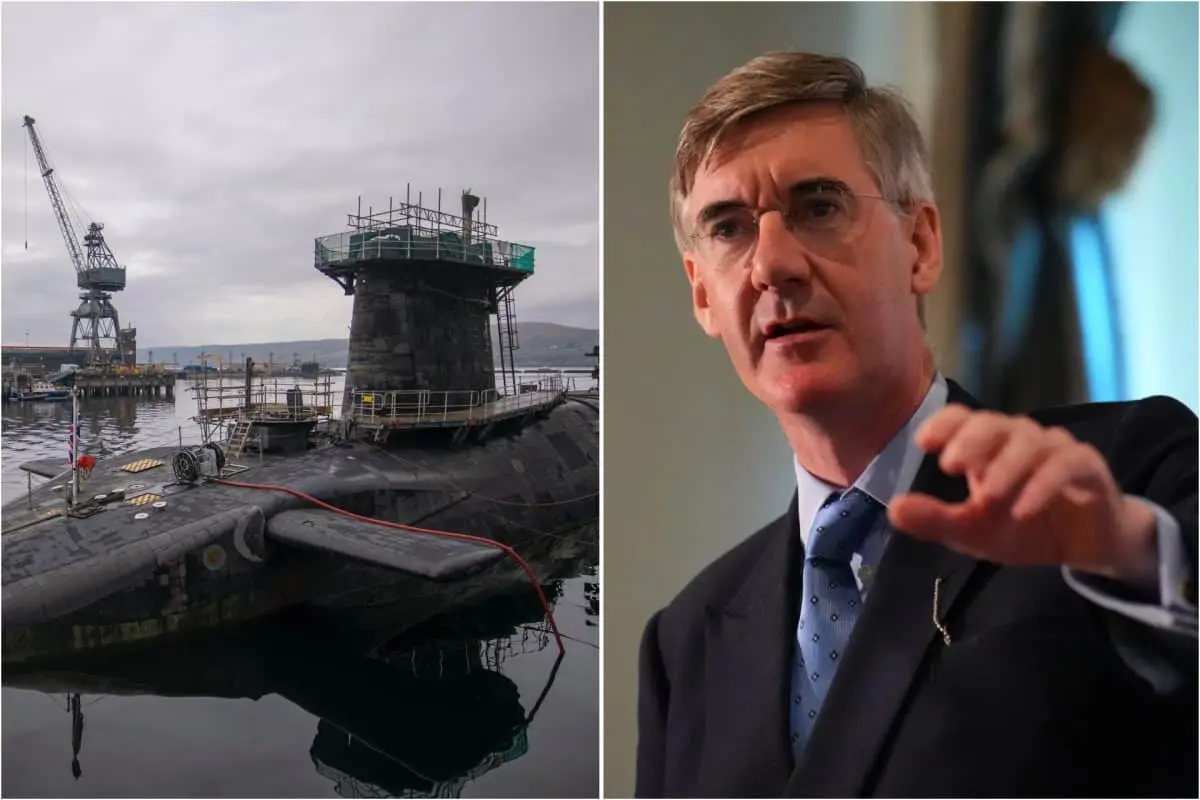Sir Anthony Seldon is set to release his latest political biography, ‘Truss at 10: How Not to be a Prime Minister’ on 29th August, covering the turbulent 49 days that Truss was in the top seat.
The book is expected to contain some bombshell revelations about her time in charge, including insight into how she proposed to deal with the fallout from her disastrous mini-budget, which sent financial markets into a death spiral.
It also claims that Sir Jacob Rees-Mogg tried to persuade Truss to make him chancellor instead of Kwasi Kwarteng, and that he urged her to abolish inheritance tax, replace all tax rates with a 20p flat rate, and organise a stunt to promote nuclear power.
Seldon writes that the then cabinet minister told Truss: “We should get a nuclear submarine to dock at Liverpool and plug it into the grid. That would show it is safe.”
Sir Anthony says cabinet secretary Simon Case dismissed the idea as a “non-starter”, adding that “the subs are needed in operations”.
That would be kinda cool if it were possible. Next time Tonga gets wiped out by a volcano, send the nearby nuclear ships to get them back online.
I don’t think power will help with that
Tonga is a poor example, I didn’t realise it was just the underwater cables, a portable emergency generator could still be useful for other disasters if power is knocked out
The Cook Strait ferries in NZ used to be able to do this, a long time ago. I don’t think the capability was ever used though.
Most of the current ships are 60Hz which doesn’t work with the NZ grid.
The new ferries were explicitly going to be 11kV 50Hz to provide disaster response capabilities including power. Then they got canned.
20 pence flat income tax?
Look, even the best education money can buy can’t fix some things.
20p per £1. i.e. 20% flat tax rate on all taxable income
Ohhhh so that’s what the kids these days mean by ‘mogging someone’ or ‘getting mogged’. In context that makes sense
Why is the sub thing a bad idea?
What’s more important:
-
Providing clean power to millions
-
Sitting at the bottom of the ocean waiting to bring about nuclear annihilation?
So from some googling it looks like the biggest nuclear subs top out at about 30MWe of output, which is roughly the same as EDFs West Benhar wind farm (https://www.edf-re.uk/what-we-do/onshore-wind/) which has 7 onshore wind turbines and can power about 18,000 homes.
Subs reactors will also be designed around the needs to power the sub with will presumably have much different load requirements to commercial nuclear power station.
I’m also willing to bet it isn’t exactly economically viable running it long term.
Slightly related but there was a time they used a engine as an emergency generator for a town https://youtu.be/FWYbD2ga8DM
Probably not set up for it, phased correctly, or economicly viable.
Saying that, as a stunt and promo it doesn’t need to be.
Nuclear subs probably aren’t set up to handle lightning hitting the grid, either.
My understanding is that subs use the nuclear plant to generate steam, which powers a steam turbine connected directly to the prop. They can’t generate that much electrical power.
Why is the sub thing a bad idea?
It’s apparently been done in Russia (they also use nuclear-powered ice-breakers) but they don’t necessarily care about safety too much. When it is done elsewhere, it tends to be that the marine reactor is no longer in the sub/ship or they modify it heavily and facilities are built to facilitate it’s use as a power plant - scroll down to “Marine reactors used for power supply, floating nuclear power plants” here.
Here’s something from someone who has thought it through (the ultimate source seems to be this post from a submarine officer):
Can a nuclear submarine [or ship] provide power to the grid in a disaster? I know it was done once after a Hawaii hurricane, but a Navy nuclear power officer recently listed the problems with the idea:
-
MOST IMPORTANTLY - There is no standard procedure to allow this. Submariners don’t brush their teeth without a vetted and approved procedure.
-
The vast majority of the rated power for a reactor is for propulsion and the vast majority of the electric capacity is for plant operations to support 100% reactor power.
-
The shore power breaker is not that big (compared to the needs of a city). It’s only meant to provide ship service power alongside the pier and sufficient power to start the reactor.
-
To jury-rig some cable into the power plant switchgear would violate many design criteria of the plant, the power plant electrical design is evaluated as a component of reactor safety to ensure it is safe. Imagine the vetting required for some Rube Goldberg solution, running an unapproved cable into the ER hatch would violate the plant’s containment. - I can’t imagine NAVSEA would risk a spotless, 100s of millions of hours (on well over 200 ships) of safe operation and a legacy of safety spanning 61 years when other solutions are available.
-
What do you do with the cable on the other side? The power grid has tons of reverse power protections and features to protect vital distribution equipment - how do you get it to the exact location you want it? There are no extension cords capable of handling that many amps long enough and if there are - the line loss would be huge. For the EE [electrical engineers] engineers and people in power generation- I also think it’d be a reactive power nightmare…
Basically, there’s no giant socket on a nuclear sub to plug anything into (some recharge the batteries from dockside others just do it from the excess power of the reactor when in dock) and there would need to be a step-up transformer with a sufficiently heavy-duty cable to run it to the grid, where the power breakers would need to be over-ridden. So basically, you’d be jury-rigging a number of complicated systems (including a nuclear reactor) for no good reason. Also if he thinks he’s going to try that in the middle of Liverpool then he can do one. I think JRM can now consider himself on the Scouse Shit-list - by default Tories are on the Naughty List and you have to work hard to get off it (basically only Hezza is welcome to come round for a pint, but he still might have to get the ale in to guarantee no-one kicks off).
-
Why is the sub thing a bad idea?
Because JRM suggested it.
-





